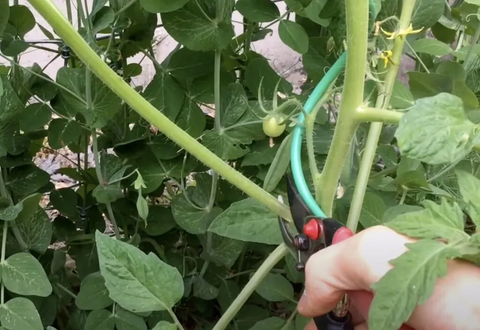Gardening can be a rewarding and therapeutic experience, but with the increasing unpredictability of weather patterns due to climate change, extreme weather events are becoming more common. As a gardener, it's essential to adapt to these challenges. Raised garden beds offer a solution by providing better control over soil conditions and improved resilience to extreme weather. In this blog post, we'll explore the tips and techniques for extreme weather gardening in raised beds.The following content also has some reference value for raised garden beds.

Understanding Extreme Weather Challenges
Extreme weather can manifest in various ways, from prolonged droughts and scorching heat waves to heavy rainfall, flooding, and even late spring frosts. These events can wreak havoc on traditional in-ground gardens. Raised beds, however, offer several advantages when dealing with extreme weather:
- Drainage Control: Raised beds facilitate efficient drainage, preventing waterlogging during heavy rains and reducing the risk of root rot.
- Soil Quality: You have more control over the soil composition, making it easier to amend with organic matter and nutrients to withstand drought or waterlogged conditions.
- Temperature Regulation: Raised beds tend to warm up faster in the spring and stay warmer during colder months, extending the growing season.
- Pest and Weed Management: Elevated beds can reduce access for certain pests, and they often have fewer weed problems.
Tips and Techniques for Extreme Weather Gardening

- Select Appropriate Bed Materials
- Choose rot-resistant materials like cedar, redwood, or composite lumber for longevity.
- Avoid pressure-treated wood that may leach chemicals into the soil.
- Optimize Bed Height
- Ensure your raised beds are at a comfortable height for planting and maintenance, typically around 18 to 24 inches.
- Amend Soil for Resilience
- Add organic matter like compost and well-rotted manure to improve water retention and drainage.
- Incorporate vermiculite or perlite for aeration.
- Mulch Carefully
- Apply mulch to retain soil moisture and regulate temperature. Use organic mulches like straw or leaves.
- Water Management
- Install a drip irrigation system or soaker hoses to ensure consistent moisture, especially during droughts.
- Use rain barrels to capture and store rainwater for watering.
- Shade Structures
- Install shade cloth or row covers to protect plants during heatwaves. Use portable or adjustable structures for flexibility.
- Cold Frames and Cloches
- Extend the growing season and protect against frost by using cold frames or cloches.
- Windbreaks
- Erect windbreaks like trellises, fences, or shrubs to shield your garden from strong winds that can damage plants.
- Crop Selection
- Choose varieties that are well-suited to your climate and resilient to extreme conditions.
- Consider drought-tolerant and heat-resistant plants.
- Monitoring Weather
- Stay informed about weather forecasts and prepare your garden accordingly. Cover delicate plants during frost alerts or brace for heavy rain.
- Crop Rotation
- Rotate crops to reduce the risk of soilborne diseases and pests.
- Harvest Timely
- Harvest crops before extreme weather events to avoid damage from heavy rain, hail, or excessive heat.
- Soil Testing
- Regularly test your soil to adjust nutrient levels and pH as needed for optimal plant health.
- Cover Beds
- Use row covers or plastic sheeting to shield plants from heavy rain or frost.
- Build Raised Aisles
- In between your raised beds, create raised aisles to ensure proper drainage and accessibility in wet conditions.
Conclusion

Extreme weather gardening in raised beds is about proactively addressing the challenges posed by a changing climate. By carefully selecting materials, optimizing soil, and employing protective measures, you can create a resilient garden that thrives even in the face of adversity. Whether it's coping with heat waves, droughts, or heavy rain, the techniques discussed here will help you adapt and continue to enjoy the rewards of gardening in an ever-changing climate. Raised beds are a versatile solution for gardeners looking to mitigate the impact of extreme weather events and ensure a more successful and enjoyable growing experience.









